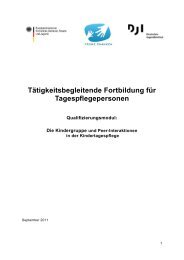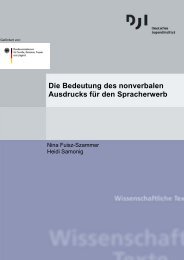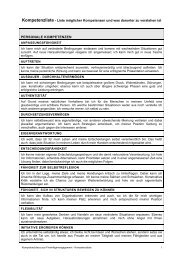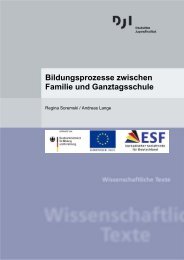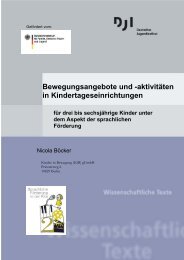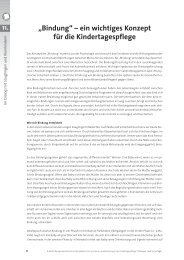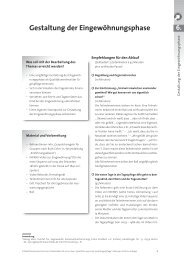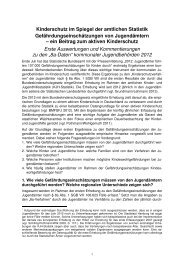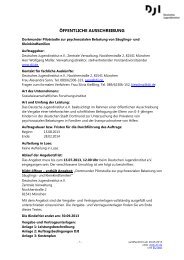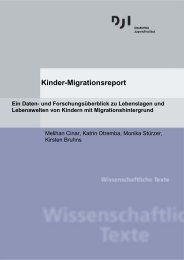download - Deutsches Jugendinstitut e.V.
download - Deutsches Jugendinstitut e.V.
download - Deutsches Jugendinstitut e.V.
You also want an ePaper? Increase the reach of your titles
YUMPU automatically turns print PDFs into web optimized ePapers that Google loves.
Three factors have a particularly positive effect on this continuing historical-intercultural<br />
integration process:<br />
1. A city centre with an urban character and a lively business community provides a<br />
forum, a “grand stage” for informal encounters among a multilateral population<br />
structure. Additionally, the individual ethnic, social and cultural groups will find<br />
their more or less accepted specific “islands of retreat” in urban districts. These<br />
areas (ethnic cultural associations, traditional clubs and associations, fire brigade,<br />
restaurants, internet cafés, etc.) frequently represent the compromise on the part of<br />
the inhabitants between the culture of their homeland and the mainstream aspects<br />
of the dominating culture within the urban district and therefore offer the<br />
experience of successive integration steps.<br />
2. Nursery schools, schools and social leisure activities (children’s and youth centre,<br />
neighbourhood centre, etc.) also offer methodical-didactic intercultural activities<br />
which encourage, intensify and partially “ritualise” the aforementioned informal<br />
associations.<br />
3. The network structure between diverse connected systems continues to be upheld<br />
by the urban district working party, the association of local clubs and the “Social<br />
Integrative City” programme as an intercultural intermediary and self-regulatory<br />
instrument.<br />
The only existing negative feature is the departure or “exodus” of younger “German”<br />
families according to demographic data. This could produce a medium-and long-term<br />
imbalance in the socially balanced heterogeneity of the population structure which could<br />
threaten to communicate the image of a “foreigners’ quarter” both internally and externally<br />
(cf. Kilb 2003).<br />
Generally, the following favourable socio-environmental aspects for successful<br />
integration processes can be identified in reference to the two studies:<br />
• non-stigmatised but structurally enhanced urban areas<br />
• urban forums for communication and common activities<br />
• similar employment and residential experiences and activities in the<br />
backgrounds of “Germans“ and “immigrants“<br />
• similar social status of (both) groups<br />
• social and material mixed structures in the relevant “communities“<br />
• fewer culturally heterogenic socio-environmental structures<br />
• common socio-environmental history on a local scale<br />
• multicultural socio-environmental economic structure in the local provision of<br />
services<br />
The following five socio-environmental criteria appear to trigger off favourable<br />
integrational effects, particularly among children and young persons:<br />
1. The variety of a graded system of cultural and background-based locations of<br />
“retreat” and multi-cultural locations/forums for self-portrayal and encounter<br />
2. common locations for cultural acquirements: locations with people and “histories”<br />
which can be experienced<br />
94



